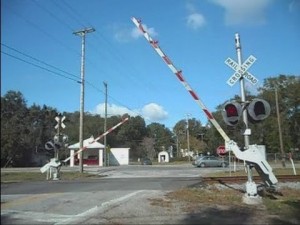Work is currently underway at a deadly railroad crossing in Harriman, Tennessee that was the site of a deadly crash that killed two people in 2014.
In May 2014, a car was struck by a train at the crossing of US 27 and Mountain View Rd. in Harriman. Several safety improvements were announced early this year, which were funded by a federal grant.
Now at the crossing there are new warning signs, wider pavement and striping further back from the railroad tracks to warn drivers of the danger.
A Roane County supervisor stated that there are two more signs that will be added, as well. The changes were entirely due to the 100% federally funded grant.
The changes made were based upon a study done by the Tennessee Department of Transportation and the railroad. Engineers studies the number of trains and cars that pass through there, the chances of a crash, speed and visibility for drivers.
Our railroad accident legal team has worked on cases with serious personal injuries and deaths that have occurred at public railroad crossings throughout the US. If this ever happens to you, it is important to know about the different federal regulations that affect the duties and responsibilities of the railroad crew that is running the train. These duties include respecting the warnings that trains have to issue when they are coming close to a crossing.
For example, railroads usually set a maximum speed for trains, and federal regulations do as well. Federal regulations also specify when the horn and whistle have to be blasted at a railroad crossing. Also, regarding trees, shrubs and vegetation, there are federal rules on that as well. They specify the details about sight lines that should be available to drivers at railroad crossings.
We have represented motorists who have been injured in railroad accidents, and know it takes a great deal of experience to know if it would be advisable to file a personal injury claim in such an accident. We also have worked on derailments that caused injuries to railroad workers.
In some railroad crossing accidents or deaths, when there are no “active” warnings such as lights or gates, there a wide spectrum of safety issues that must be evaluated. In many tragic railroad crossing deaths, there is no evidence whatsoever that a driver was trying to “beat the train,” contrary to the argument that railroads often advance. Only a careful analysis of the safety of the crossing can answer these liability questions, and it requires objective expert analysis, and this analysis should be done as soon as possible to try to replicate the sight lines that both the train crew and motorist had. In many crossing cases, the railroads rush to alter the scene with slight modifications, and this can include cutting back foliage/vegetation among other subtle changes. If you or a family member suffers a railroad crossing crash, consult with one of our experienced railroad attorneys as soon as possible to assure that the evidence is preserved.
